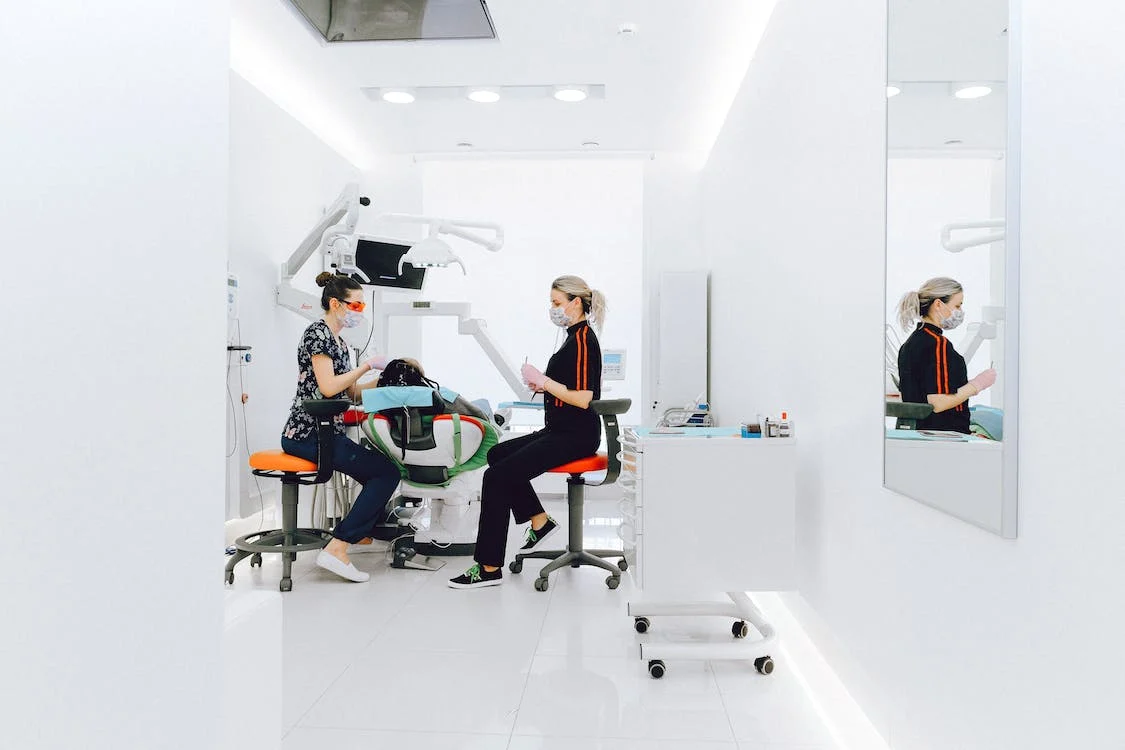Every year, over 10 million people undergo some variation of oral surgery. Dental surgery can range from standard procedures, such as fillings, that most people have, to uncommon procedures reserved for special situations.
Facial structures such as teeth, jaws, and cheeks can be operated upon during maxillofacial surgery. Although the most common type of oral surgery is tooth extraction, some maxillofacial surgeons also treat conditions including sleep apnea and cleft palates. Doctors specializing in this field undergo several years of specialized training beyond general dentistry.

With this being said, let’s look at some of the most common oral surgeries people in America are getting.
Extraction of Teeth
Tooth extraction is undoubtedly one of the most popular oral surgeries dental surgeons perform. Most people have their teeth extracted annually for various reasons, from infections and decay to cosmetic purposes. When teeth break or become infected due to wear-and-tear or decay, they need to be pulled out by an oral surgeon. A numbing agent is used during oral surgery to make the procedure painless. In addition to removing the tooth, the oral surgeon will clean up the socket (cavity in the jaw that used to hold the tooth) and possibly suture it to promote healing.
Temporomandibular Joint (TMJ) Surgery
Surgery for the temporomandibular joint disorder (TMJ) can reduce pain and improve jaw movement and function. This surgery also helps prevent TMJ disorders that cause jaw joints and muscle pain. Because of this reason, patients who are suffering from TMJ usually undergo this surgery to ease their pain. And if you’re considering getting it, search for the maxillofacial surgeons available in your area. You can look for over through a keyboard search; for instance, if you live in San Francisco, search for temporomandibular joint surgery San Francisco, and you’ll find plenty of hospitals and doctors that perform this surgery.
The TMJ allows Jaw movement, which connects the jaw to the skull. So, TMJ disorders can be treated by surgery by repairing or replacing the jaw’s parts causing the problem. However, patients interested in undergoing surgery should consult their doctor to discuss the best options.
Placing Dental Implants
The most common oral surgery procedure is implant surgery. The purpose of dental implants is to replace missing teeth, similar to dentures. Dentures are removable, while implants are permanent. A dental implant procedure involves several steps, which often take months to complete. To begin with, the remaining broken teeth must be removed before replacements can be made. Following the healing process, dental impressions are made. Any bone grafting that is required will happen after the impressions are taken.
When the grafts have healed, titanium screws are inserted into the gums to hold the teeth in place. The healing process takes several weeks. As soon as the screws are healed, the abutments are attached. In some cases, additional healing time is required. Lastly, replacement teeth are placed on the abutments. Once the wound has healed, the patient has a natural smile that will last a lifetime if cared for properly.
A Bone Graft Procedure
When a patient loses a tooth but does not replace it, the jawbone under the empty spot begins to deteriorate. Eventually, the body will absorb it. Therefore, it is likely that the patient won’t be able to support a replacement tooth after a certain time has passed. In cases where the bone cannot support the new tooth, a bone graft may be required.
Most of the time, the healthy bone will be taken from a different jaw region. The graft will take some time to heal before a replacement tooth can be placed. Sometimes, platelet-rich plasma (PRP) may also be used in conjunction with the graft. PRP is taken from the patient’s blood and promotes tissue regeneration and healing.
Apicoectomy
Oral and maxillofacial surgeons perform apicoectomies if a root canal is impossible due to a hooked root at the bottom of the tooth. Since dental instruments cannot reach the root tip, nerve material cannot be removed. This can lead to an infection. During an apicoectomy, a surgeon cuts off the tip of the root and fills the space with a biocompatible material.
Removal of the Wisdom Teeth
Wisdom teeth are extra molars that don’t emerge until you’re 17 or 20 years old. Often, these molars develop normally and enhance your chewing ability. Occasionally, they emerge incorrectly, crowding nearby teeth or not emerging. If that’s the case, you may need oral surgery to remove your wisdom teeth. Light sedation may be used as part of this outpatient procedure to relieve anxiety and pain. In most cases, wisdom tooth extractions take a few days to heal.
Surgical Correction of the Jaw
Having a misaligned jaw makes eating and speaking more difficult. You may even have difficulty breathing. Corrective jaw surgeries can solve several problems. These include bite corrections, which affect the fit of teeth in the closed position, and facial symmetry corrections. In addition to treating jaw disorders, corrective jaw surgery may also treat injuries, correct cleft palates, and relieve pain related to temporomandibular joint disorders.
Correction of the jaw is most commonly performed in the late teens or early 20s after the jaw has stopped growing. An incision is usually made in the upper gums to access the jaw and make necessary changes. As a result of the surgery, the jaw is fixed in its new position by plates or screws, and stitches are used to enclose the gum afterward.
The Treatment of Obstructive Sleep Apnea
People with obstructive sleep apnea (OSA) suffer from dangerously low oxygen levels during sleep. Surgery to alter the upper airway, jaw, or palate structure is sometimes recommended for people with OSA. Surgery designed to treat OSA may include Uvulopalatopharyngoplasty (UPP), which involves removing tissue from the uvula and the soft palate, tongue advancement, and implants in the soft palate. A maxillofacial surgeon with specialized training in improving sleep quality and oxygenation for people with OSA can perform these surgeries.
Final Words!
In all, these are just a few of the common oral surgeries that people in America get. However, those who feel they may require oral surgery should discuss their concerns with their dentist. By doing so, they will receive excellent care.

